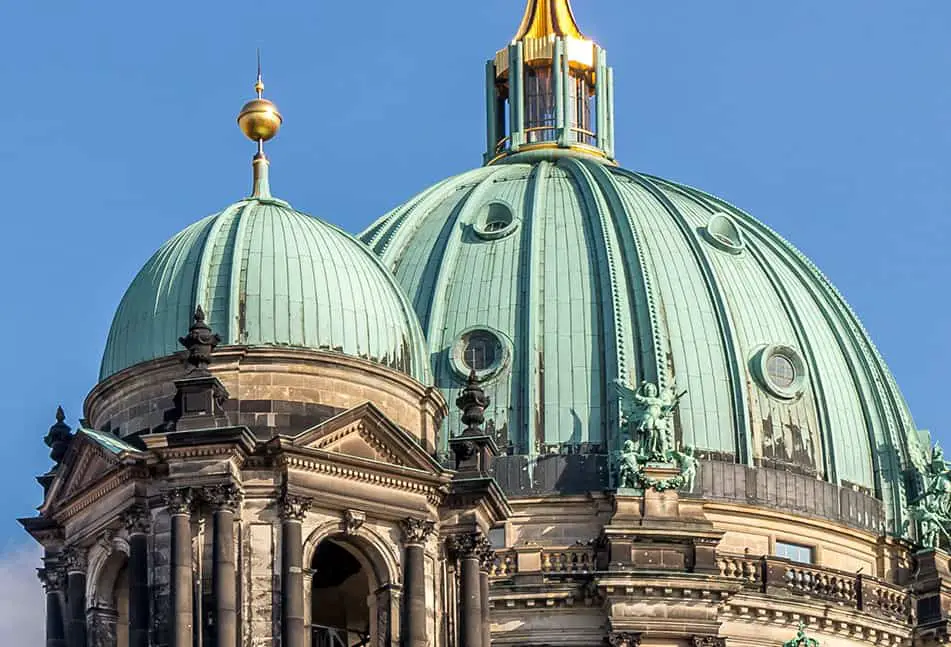
Copper roofs look entirely different from all other roof types. Have you ever wondered why architects decided to use this material?
The primary reason for a copper roof is its unique and striking visual appearance. Copper is also a very malleable material, making it a popular choice for irregular roof shapes such as domes or spires.
Copper also benefits from being naturally resistant to the elements. When the metal oxidizes, it forms a protective layer on its surface. This layer is also what gives copper its green color.
These are the main reasons people choose to use copper as a roofing material, but several other benefits exist. The following article goes into more detail about what makes copper such an excellent roofing material. We will also discuss why it has such a unique color and how long it takes to change from shiny orange to vibrant green.
The Benefits of Copper Roofing
Visual Appeal
The primary reason for using copper as a roofing material is its distinctive look. The blue/green patina, which is created when copper weathers, is bold and unique.
Copper Can Be Molded Into Unusual Shapes
You may have noticed that many religious or government buildings have copper roofs. One reason for this is that it has a beautiful appearance.
Another reason is that copper is malleable and can be molded to cover complex roof structures. This makes it ideal for covering unusual shapes like domes and spires, which often feature on prestigious buildings.
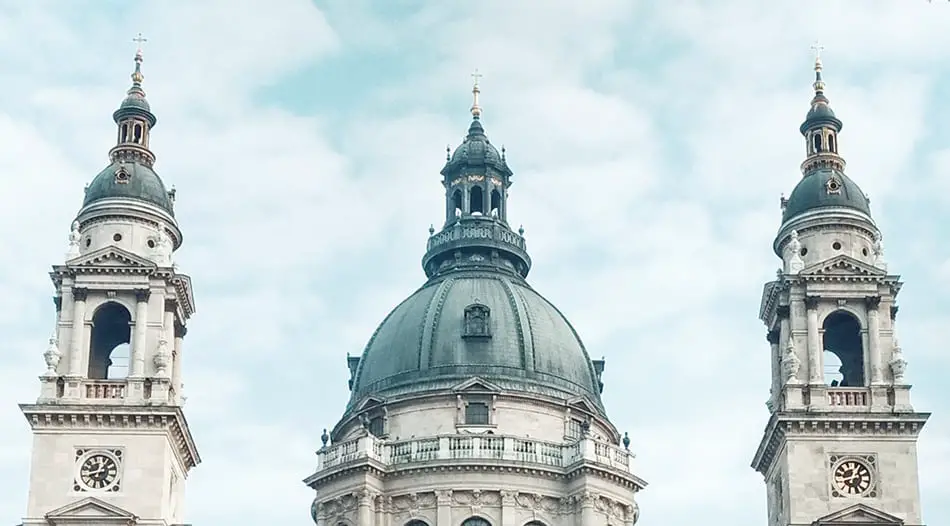
Copper Requires Little Maintenance
Over time, buildings suffer wear and tear and require upkeep and maintenance. As the copper oxidation forms a protective layer, the maintenance costs are significantly reduced.
No Painting or Finishing
The striking green color of oxidized copper occurs entirely naturally. This means that it does not need to be painted or re-painted during its lifetime. This saves on both the cost of the paint and labor.
As oxidation occurs naturally, the copper does not need to be treated or finished in any way.
It’s An Economical Material
As copper roofs can last for such a long time, they become very cost-effective. Although a copper roof’s initial installation cost is higher than that of other materials, the minimal maintenance required makes the copper excellent value in the long term.
Copper Roofs Have A Long Life
Copper is a material that improves as it ages. A copper roof can last over 100 years, which is more than any other roofing material. Its natural patina makes the material highly resistant to corrosion.

Copper Is Antimicrobial
Copper naturally has antimicrobial properties. This means that bacteria and fungus cannot grow, and therefore the roof cannot produce mold or rot.
It’s Lightweight
You might assume that having a metal roof would be very heavy, but this isn’t the case. Compared to stone or concrete tiles, copper is much lighter.
This means that the structures that support the roof can be reduced and therefore reduce the overall construction cost.
This can also improve the longevity of a building as the structure is under less stress.
Copper Can Be Salvaged And Recycled
Copper is in high demand and can be easily sold. This means at the end of the roof’s life, a lot of the cost can be reclaimed.
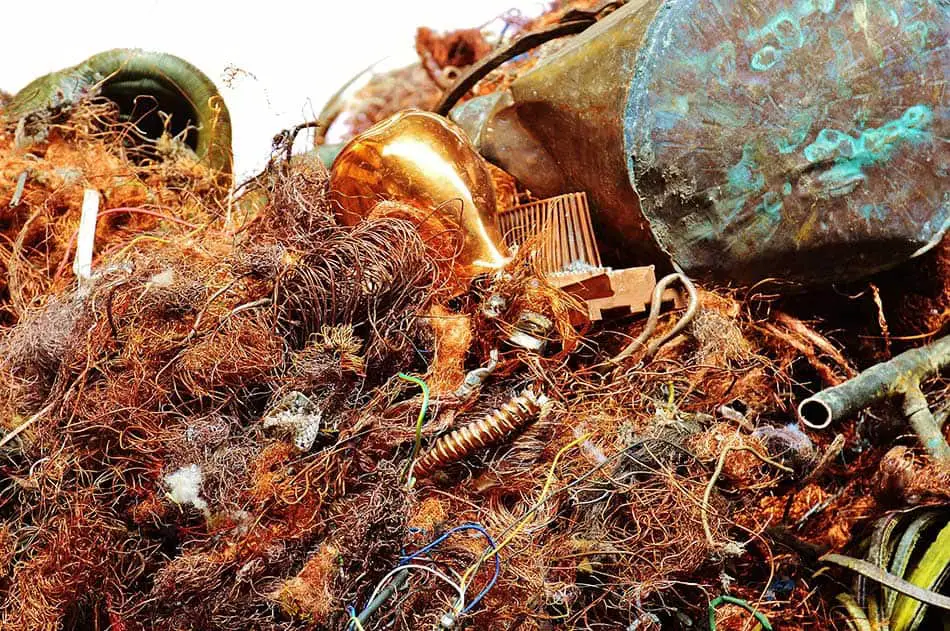
It’s Environmentally Friendly
The longevity of copper as a construction material and its ability to be reused and recycled make it a very sustainable building material.
Copper also reflects heat, which can reduce the impacts of heating and cooling a building.
Fireproof Properties
It takes very high temperatures to destroy a copper roof. This means that if an adjacent building is on fire, a copper roof building will have greater protection from catching fire than many other roof types.
Problems With Copper Roofs
Copper Is Expensive
The price of copper is always fluctuating, but it remains consistently the most expensive material to construct a roof.
Even though it can last for an incredible amount of time, copper’s upfront cost makes it impractical for projects where budgets are tight.
It Can Take A Long Time To Become Green
Many people choose copper as a roofing material because of its striking and unique green color. This, however, can take up to 40 years to achieve.
Firstly, the copper changes from shiny orange to a dull brown color. This is the layer that protects the metal from corrosion. It then will take several decades to change from brown to vibrant green.
Copper Can’t Touch Other Metals
If copper comes into contact with another type of metal and water, it can cause a process called galvanic corrosion. Although the copper itself will not corrode, the other metal is likely to suffer.
For this reason, if nails are used in securing the roof, these must also be made from copper.
Types Of Copper Roof Construction
Copper Panels
This is the most affordable way of constructing a copper roof. Copper sheets come in as a standard size and are installed by hand. This method creates noticeable seams.
Copper Shingles
This is also a relatively low-cost method. Small copper tiles are installed by hand much in the same way as a wood shingle construction. Copper nails must be used to prevent galvanic corrosion.
Continuous Copper Roofing
This is the most expensive option. Rolls of copper are prefabricated off-site and create a finish with minimal joins or seams.
Why Do Copper Roofs Turn Green?
The process in which copper turns from shiny orange to vibrant green is called oxidation. The green layer which forms on the surface is called patina.
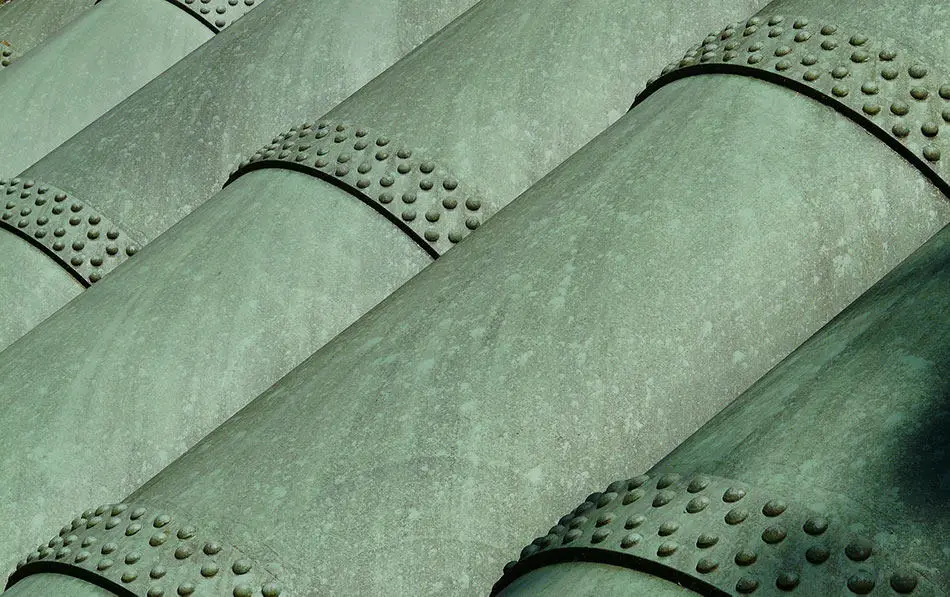
Copper turns green due to exposure to moisture and oxygen in the air. First the copper turns into a dull brown color, then to a vibrant green after a period of up to 40 years.
The green color is a result of many chemical reactions that take place. It’s a very complicated process, but the main elements at play are copper, oxygen, and sulfur.
- Copper reacts with oxygen to form cuprite.
- Cuprite then reacts with oxygen again to form tenorite.
- When this reacts with sulphuric acid and water from rain, and chloride from salt water, a chemical element called atacamite is formed. This chemical is what causes the surface to appear green.
This youtube video explains it far better than I can:
Salt & Water
The salt and water levels in the atmosphere are the two main things that will affect the speed at which copper weathers.
In coastal and marine environments, copper will weather much faster.
Acid Rain
Acidity in the rain also has an effect on the speed of weathering. If precipitation has a ph level of less than 5.5, copper will age faster. This means that copper roofs in industrial areas and cities will weather much faster than in rural areas.
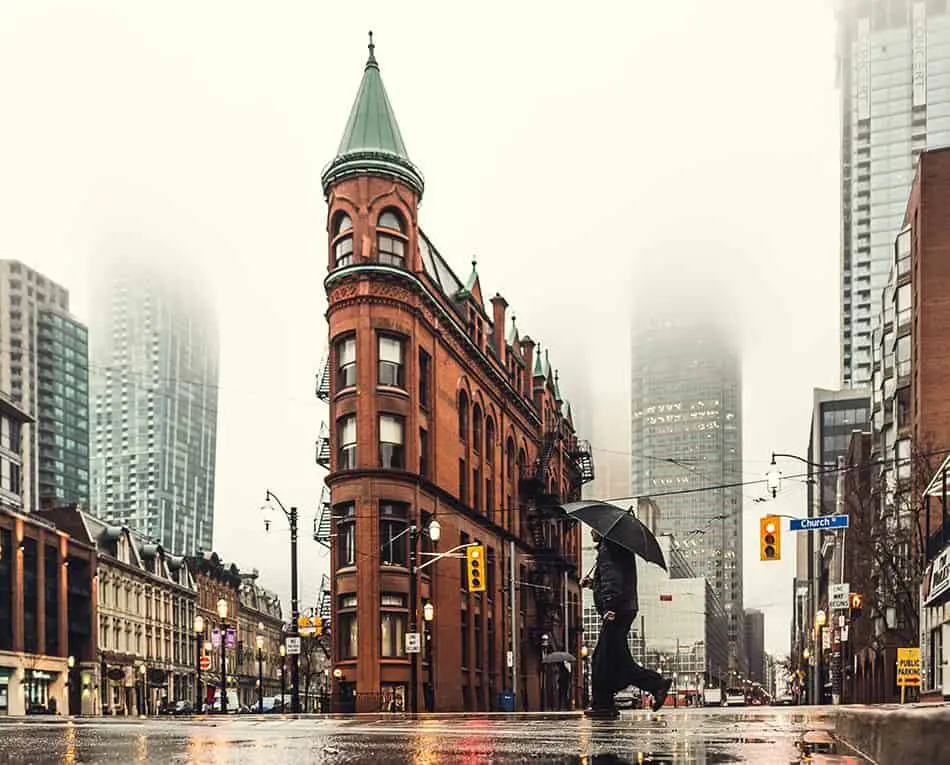
How Long Does It Take For Copper Roofs To Turn Green?
It can take up to 40 years for a copper roof to change from shiny orange to a rich green patina. However, in coastal and marine environments where moisture and salt levels are high, this process can be reduced to 10 years.
The rate the copper weathers is also affected by the level of acidity in the rain. Copper in industrial areas and cities will turn green faster.
Can Copper Be Prevented From Turning Green?
It is possible to prevent a copper roof from turning green with the use of protective coatings. These coatings will degrade over time, so it is essential to factor in the practicality of recoating a roof every few years – especially if it’s a big roof!
Famous Buildings With Copper Roofs
Copper roofing is a process that has been used for around 400 years, and many iconic buildings feature this iconic building material. There are countless numbers of buildings with copper roofs, but here are just a few of our favorites.
Berliner Dom – Berlin, Germany
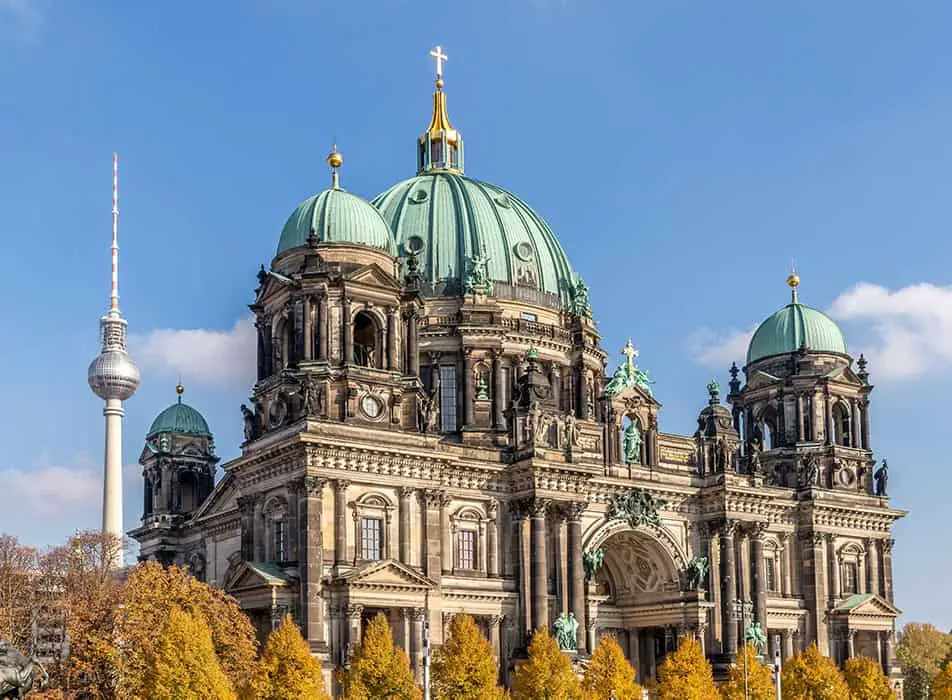
Completed in 1905, the Berlin cathedral has 5 domes, one of which is 98m high! All of these are covered with copper, which has a beautiful bright green patina.
Kerbs Memorial Boathouse, Central Park – New York, USA

The Kerbs Boathouse is the smallest building on this list but is possibly one of the most beautiful. It can be found next to the model boat lake to the east of Central Park.
Børsen – Copenhagen, Denmark
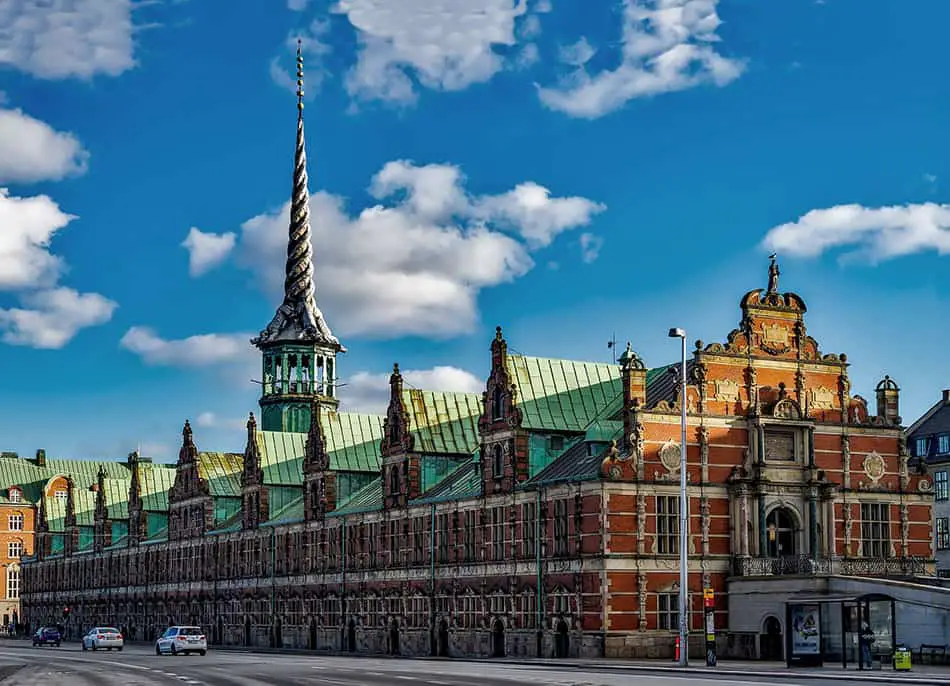
Completed in 1640, the Børsen is a former stock exchange. The building is most known for its unique twisted spire, formed of 4 dragon tails wrapped around each other.
Frauenkirche – Munich, Germany
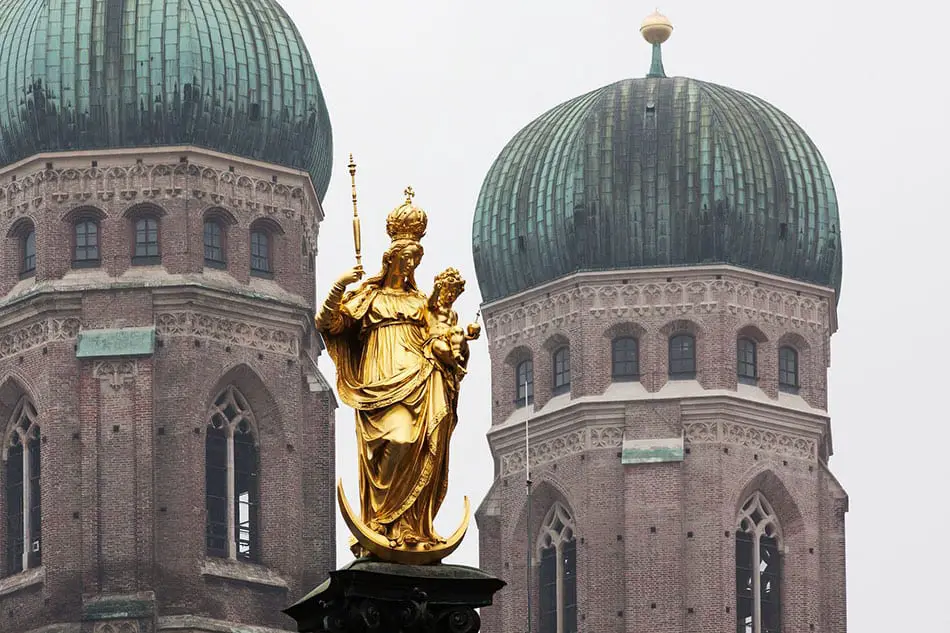
Initially completed in 1488, the two iconic copper-topped domes were added in 1524. These domes reach a height of 99m!
St Jacobs Kyrka – Stockholm, Sweden
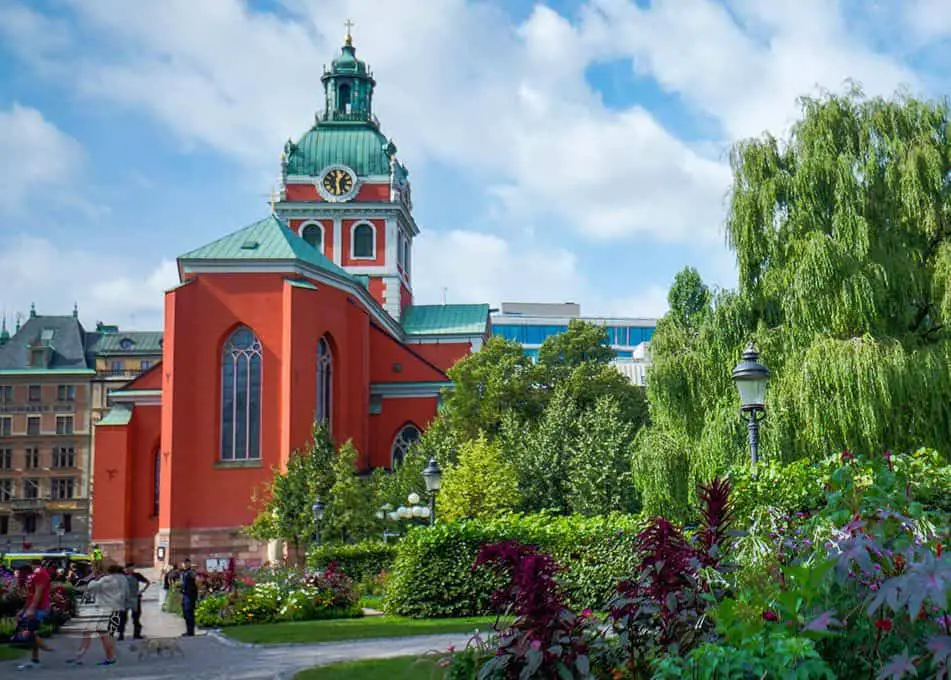
Opened in 1643, the St Jacobs Kyrka (St James’s Church) can be found in the beautiful Kungsträdgården park in Stockholm.
Statue Of Liberty, New York, USA

Okay, so it might not be a copper roof, but we could have a list of the best copper buildings without mentioning the Statue of Liberty.
The statue was completed in 1886 and was actually a gift from France.
If you found this article interesting, you might also enjoy What are Gargoyles? Everything You Need To Know

